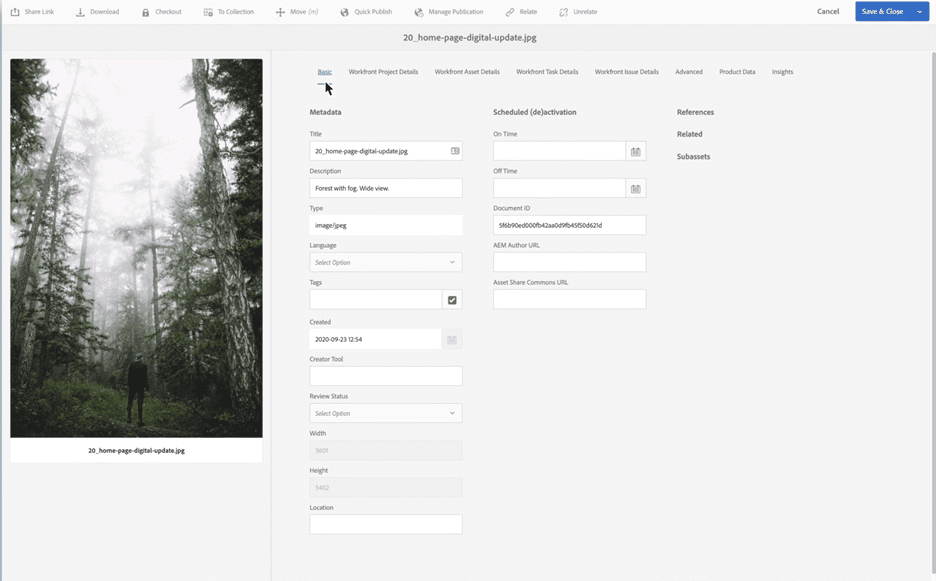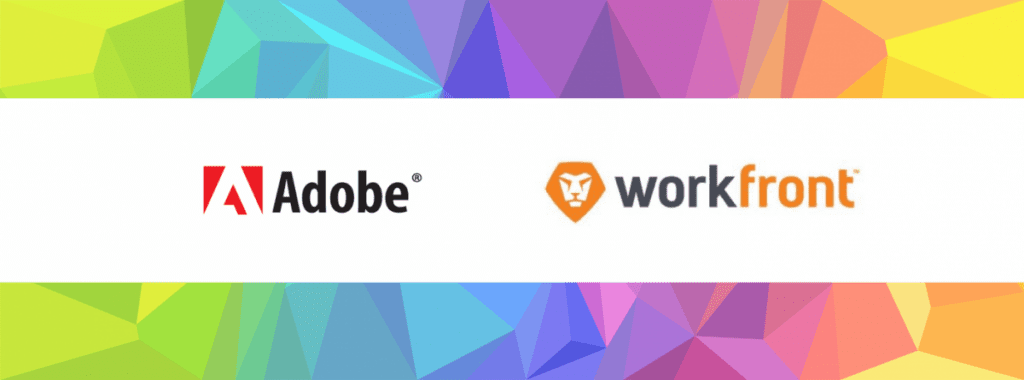Let’s immediately get beyond the vital stats and talk about what this acquisition means for both those in the industry and for Wall Street. As Lima Consulting Group is both a Gold Partner with Adobe and a certified and experienced Workfront partner, our close relationships with both companies give us some insight as to what this acquisition means beneath the surface. We believe it will change both the marketing cloud category, and the Portfolio and Program Management (PPM) software category.
While the $1.5 billion acquisition of Workfront is more than a single tip of the hat for the PPM category, it marked a thunderclap for the enterprise marketing cloud technology providers. In the past few months, we’ve seen the IPO of Atlassian, owners of Jira and Wrike, and Asana. The category is now established, and this acquisition promotes the category to a new level. It now embeds the Operational System of Record (OSR) within the digital experience ecosystem.
With remote work, and the ubiquitous adoption of collaboration tools, we’ve entering a new era of how work gets done. Adobe just laid down the gauntlet for all others to follow. This acquisition unlocks value beyond marketing. It touches all parts of the enterprise.
Adobe just bought the most comprehensive platform, so the followers are going to need to both buy point solutions and stich and build to reach parity to the Adobe + Workfront offering. By that time, Adobe should have re-defined the category.
What in 2009 started out as a digital marketing platform with the acquisition of Omniture for $1.8 billion, the Adobe Experience Cloud now extends beyond digital marketing. When forecasting the impact of this acquisition, Adobe can now open new conversation onramps with operational teams of every discipline within an enterprise.
While creatives and marketers are generally the practitioners in Adobe, about one in three of Workfront’s 3,000 customers are current customers of Adobe. At first glance, that’s a tidy overlap, but our view is that Adobe has the opportunity to use the non-Adobe Workfront user base, who are generally operational in nature, in order to extend all three of Adobe’s clouds. Of course, the primary integration lift will start with Adobe investing in expanding native features starting with the Adobe Experience cloud, but to reach and serve those beyond marketing practitioners, Adobe can more tightly integrate Adobe Sign and even the Adobe Creative Cloud into the Workfront platform. The pdf business and electronic signatures capabilities of Adobe are logical fits for further integrations.
Although Workfront’s products were not specifically designed to support marketing workflows, they have seen wide adoption by marketing, advertising and professional services teams. As a matter of fact, At Task, which rebranded to Workfront in 2015, was the Operational System of Record for the largest Adobe consulting practice in the world, that is, Adobe Global Services (AGS). While Adobe uses another technology platform now, perhaps they might return to run the Adobe Global Services division with Workfront.
What’s In It for Customers
For existing customers of both Adobe and Workfront, expect an acceleration of Adobe features within Workfront. It doesn’t hurt that Workfront is headquartered in Silicon Slopes, as is the Adobe Experience Cloud business unit. It might take 12-24 months before we see accelerated integrations, but Workfront has something most people don’t know about, an iPaaS. Workfront has a little talked about offering called Fusion, which is a classic Integration Platform as a Service (iPaaS). Expect to see Fusion rolled into the core architecture of the entire Adobe Platform, not just the Adobe Experience Cloud. And, as is more commonly touted by Adobe, Workfront already had developed tight integrations with the Adobe’s Digital Asset Manager (DAM) that accommodated workflows and process maps for practitioners that publish high volumes of digital assets. Ad agencies and marketing departments usually select Workfront because it enables tight integration with Adobe’s Creative Cloud and Experience Cloud products.

Customers of one or the other will have the eventual advantage of one-stop shopping for creative and digital experience tools, with native workflow integration that streamlines the process of creating, reviewing, approving, cataloguing, and using content and digital assets in marketing deliverables. You can think of it as a complete digital asset lifecycle management tool.
Although streamlining workflows is all well and good, Adobe has the opportunity to offer something more:
The ability to acquire, organize, and analyze data to show the effectiveness of that streamlining by integrating the creative and experience tools with those that track the dollars and cents. Think of the impact marketing practitioners could have if they can understand the projected forecast of a marketing campaign.
This aspect enables customers to answer questions such as:
- What types of digital assets are being produced more efficiently by streamlining workflows?
- How could business and financial leaders accelerate forecasts for marketing’s contribution to sales?
- Using the Adobe Sensei platform that leverages AI and ML, can organizations use advanced analytics to forecast and simulate the performance of marketing assets performance and impact to the bottom line?
- Where are the bottlenecks in the key business drivers and value driving and cost driving process?
- Which campaigns, departments, and individual contributors are producing the most value for the enterprise?
This ability to “connect the dots” between tools, people, process, and profitability shows operational teams what activities are most effective allowing them to prioritize and optimize.
The impact to Adobe’s Platform Architecture
Much of the talk about the Workfront acquisition has focused on Workfront’s slick, modern, easy-to-use user interface, but there are two additional aspects of Workfront’s product line that fill critical gaps in Adobe’s technology stack:
- Fusion: Workfront’s Fusion technology greatly simplifies integration with a wide range of systems and applications, from collaboration tools such as Slack to human resource tools such as Workday. Expect to see Fusion rolled into the Adobe Core Architecture as a deeply embedded accelerant in overcoming the perspective of many that Adobe’s marketing cloud is a walled garden.
- Align: In November of 2020, Workfront launched an Objectives and Key Results (OKR) platform enabling organizations to ladder Organizational Goals down to individual tasks and track projects and tasks with regard to stated organizational goals (OKRs). This category is really exploding with new entrants and smaller point solutions such as Ally.io, Lattice, Betterworks and Workboard.
These technology components give Adobe an opportunity to build a comprehensive platform for project, portfolio, and program management—a full suite of tools that can replace a disparate range of siloed applications and serve as a single operational system of record.
What does this Acquisition unlock for business leaders?
By centralizing all tasks related to delivering winning customer experiences, practitioners can combine the benefits of mashing up Adobe’s Experience cloud with a platform for how work gets done. The combination unlocks new ways for teams to work together and to even think as well as act differently to accelerate desired business outcomes. Here are five specific unlocks that Workfront brings to the Adobe community.
Activity Based Costing: Because Workfront houses the hourly rates, costs of goods sold and even billable rates, financial leaders are able to directly trace the marketing motions to their financial impact. Leaders can determine the cost to produce each piece of content and each campaign to determine marketing’s contribution to sales.
Process Intelligence: By connecting Workfront to the financial system of record, using the time tracking features, leaders can connect tools like Signavio to determine the variability in documented processes relative to what actually happened in the activity logs of the real-life processes. Leaders can then look to improve exceptions to the process and steer them into the Straight Through Process using automation and process improvement discipline.
Scenario Forecasting: With a financial baseline that accounts for capacity planning; that is, the ability for the organization to produce the work that customers are buying, the organization can begin to identify bottlenecks and the financial impacts of specific process improvements.
Robotic Process Automation: RPA is the fastest growing software category globally right now and it wouldn’t surprise us if Adobe more closely embraces the big three RPA providers in the ecosystem, UI Path, Blue Prism and Automation Anywhere. Once an organization reaches an understanding of what the process for a workstream should look like, such as a project plan for a repeatable and scalable activity, many of the tasks can be assigned to RPA platforms to accelerate execution and standardize results.
Business Process Mapping: You can’t digitize what you haven’t documented. Tools like Signavio are used to document processes and accelerate collaboration throughout the enterprise once an organization is ready to graduate from Microsoft Visio.
Accountability based Performance Models: Business leaders can turn the agency model on its head and pay for the actual financial performance of content and campaigns rather than for paying for hours or marketing motions. Employee bonuses can similarly be based on value creation related to specific tasks, and budget to actual variances.
Lima Consulting Group and the Adobe + Workfront Combination
As trusted advisors to those who are creating the digital future, we frequently advise our clients on the enterprise grade marketing platforms from Adobe, Salesforce, Oracle and Google, and Modern Work Management and Portfolio and Program Management Solutions such as Workfront, Monday.com, Wrike and many others. At Lima Consulting Group we understand the value of what it means to integrate the platforms that power winning customer experiences.
The promise of the acquisition will accelerate the key business outcomes that executives are funding. With more “on-time and on-budget” execution, practitioners are better enabled to seek additional funding, reduce risks, effectively scale initiatives, and increase revenue.
Arun Prabhakaran, Executive Vice President at the UAC, shared “Workfront enabled how the work for our own transformation is getting done. We’re in the middle of a tremendous investment in our own digital transformation that spans 12 software solutions. We’re asking every customer, employee, and partner to engage differently with us now that we’re going completely digital.”
When talking about the breadth of the Workfront offering, he stated, “we scanned the market, seeing a broad array of point solutions focused on task management and project management. Workfront with Goals was the only platform that had the capability to connect our Key Business Objectives all the way down to everyone in the enterprise. With Fusion, Workfront connects our data to Oracle NetSuite, Microsoft Teams, Tableau, Signavio and Qualtrics. To meet our complex time tracking needs that lead to forecasting scenarios, and they showed us Scenario Planning. Without our long-standing partnership with Lima Consulting Group as trusted advisor and systems integrator who understand our business, we wouldn’t have the confidence to absorb so much change in so little time without.”
We’re looking forward to helping clients realize the full potential of the Adobe + Workfront platform. Our team is certified and experienced in helping practitioners and visionaries leverage the platforms to streamline operations, integrate systems, optimize investments, and get the most value from their data.
Contact us today to learn more about how we can help you accelerate your digital transformation and create winning digital experiences.

